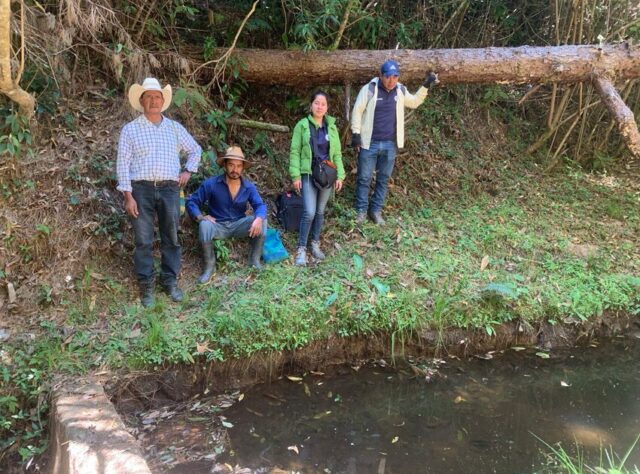
Credit: AESMO.
By supporting our Save the Cloud Forests of Honduras appeal you will help to safeguard vital water sources in Honduras’ Trifinio region.
Here, the cloud forests are heavily fragmented due to the rising threats of agriculture and farming, but the water supplied by the remaining forest is crucial for people and for wildlife.
Together with local communities, our partner AESMO is working to protect this threatened land and the essential water it provides.
Why is this region so crucial for water?
AESMO’s project area in the Trifinio region is part of the hydrographic systems of two of the most important basins in Central America: the trinational Lempa River basin, shared by Guatemala, Honduras and El Salvador and the Ulúa River basin, with its mouth in the Caribbean Sea.
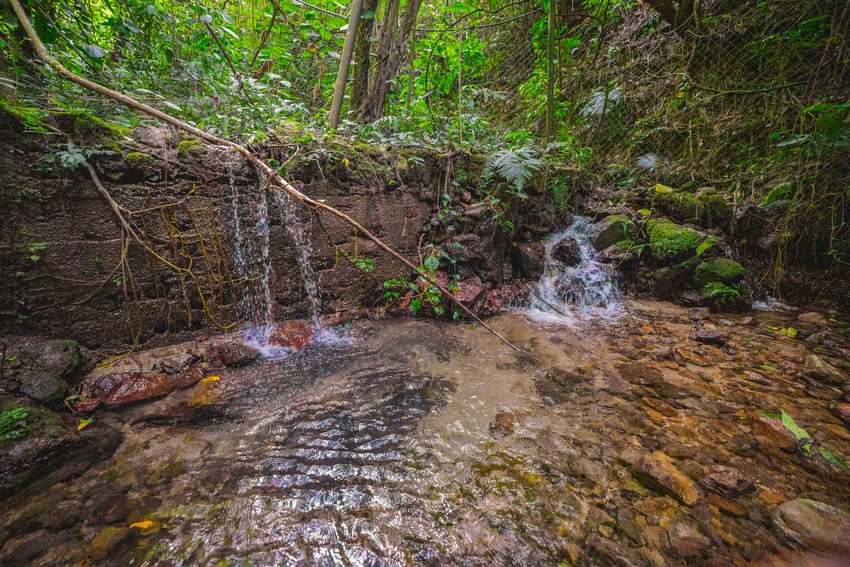
The cloud forests of the Trifinio region contain many vital watersheds, streams and waterways. Credit: AESMO.
So far, AESMO has purchased key areas of standing forest in this region, which are all co-owned and co-managed with local communities and other local stakeholders. This protected land provides water for approximately 250,000 local people, not counting the Salvadoran population, which is estimated at another 195,000.
In Honduras, many of these people live in rural villages without access to mains sanitation, so the water supplied from the forest is essential for drinking water and agricultural use. As such, the cloud forests protected by AESMO supply clean and consistent water to thousands of people. Without the forests, their water supply would be severely threatened.
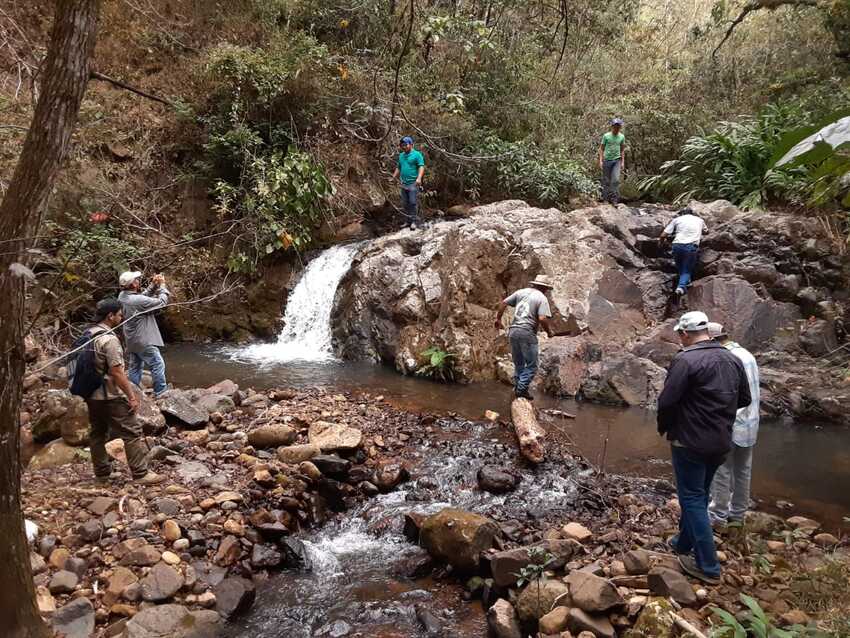
The cloud forests offer abundant, clean water for domestic consumption, like the water source pictured here. Credit: AESMO.
The impact of conserving these forests and the water they produce
Víctor Saravia, Executive Director of AESMO, says “by conserving and protecting the forest, we contribute to the restoration of the water cycle, allowing water to infiltrate the soil, supplying aquifers and preventing erosion. We also ensure the supply of clean, abundant water for communities, as well as for wild flora and fauna.”
Conserving forests also reduces the vulnerability of the population to water-borne diseases, as well as floods and landslides caused by hurricanes and tropical storms, which are impacting this region of Central America at an increasing rate.
Alongside this, Víctor explains that preserving forest is vital to mitigating human conflict. “If we do not protect this forest, water sources will be depleted,” says Víctor, “running the risk of social conflicts over access to water between Honduran communities, as well as between Honduran and Salvadoran residents. Conflicts such as these could escalate to violence, as evidenced by some cases that have occurred in previous years.”
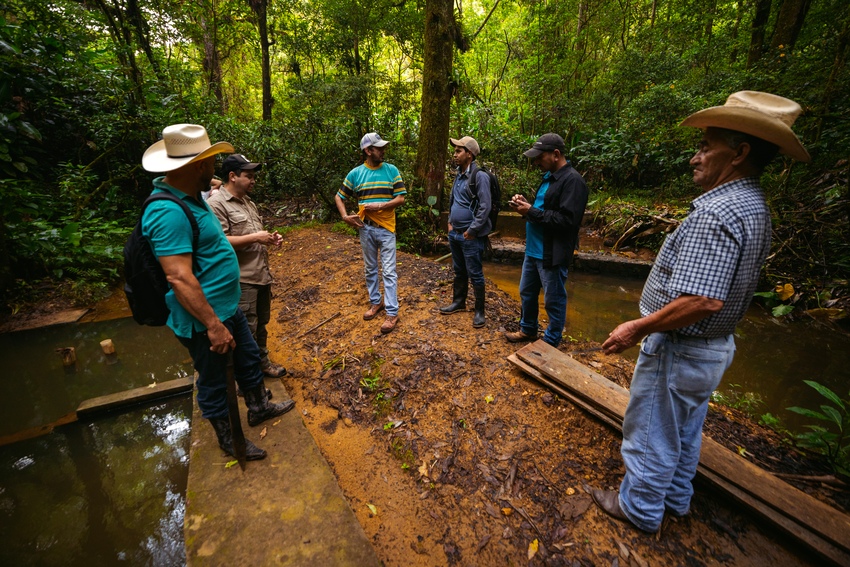
Protecting standing forest using co-ownership ensures that water is preserved and consistent access is agreed fairly between communities. Credit: AESMO.
It is clear to see that protecting these forests in co-ownership with local people has a huge positive impact for communities, land and wildlife alike.
How are water sources cared for and managed?
The communities of Honduras have water management boards, which are elected by residents in community assemblies. These water boards are responsible for managing the system that supplies water to each community, from its source of intake, pipelines and storage tanks to distribution into homes.
“In some cases, communities are already extracting water from the lands they are purchasing,” says Víctor. “In other cases, they are considering extracting water in the future, which is why they seek to secure land through co-ownership to prevent social conflicts over access to this vital resource.”
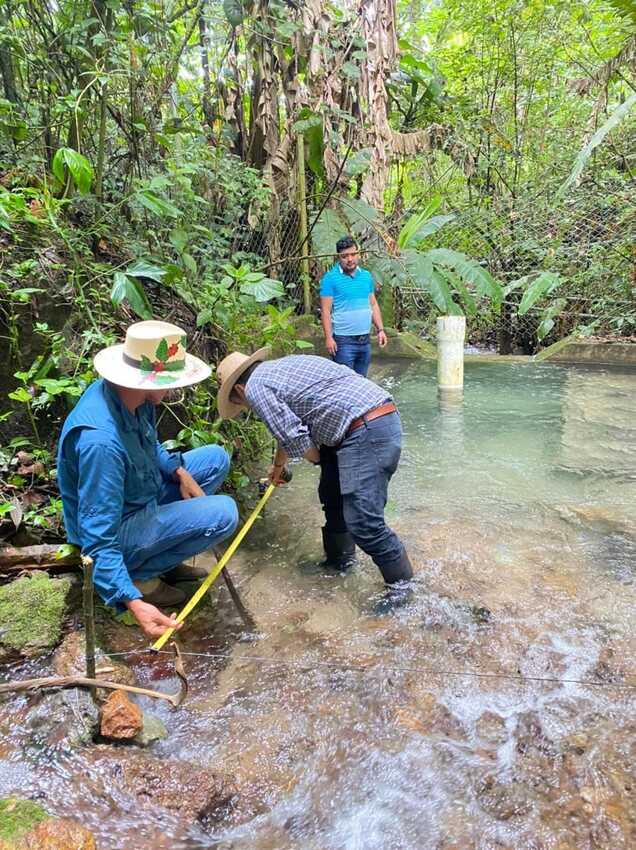
Taking measurements of the Río Hondo riverbed under the direction of a hydrogeologist. Credit: AESMO.
Once land is purchased by AESMO and local stakeholders, it’s brought under the care of AESMO’s co-management councils. Representatives from the water boards are part of these co-management councils, sharing responsibility for the long-term protection of land and water.
Water management activities are a key part of the councils’ responsibilities. These include flow measurements, one in the dry season and another in the rainy season, and regular analysis to assess water quality.
Víctor says, “the co-management councils propose and execute actions for the best administration of water, the development of hydraulic infrastructure and the protection and preservation of water resources, biodiversity and soil.”
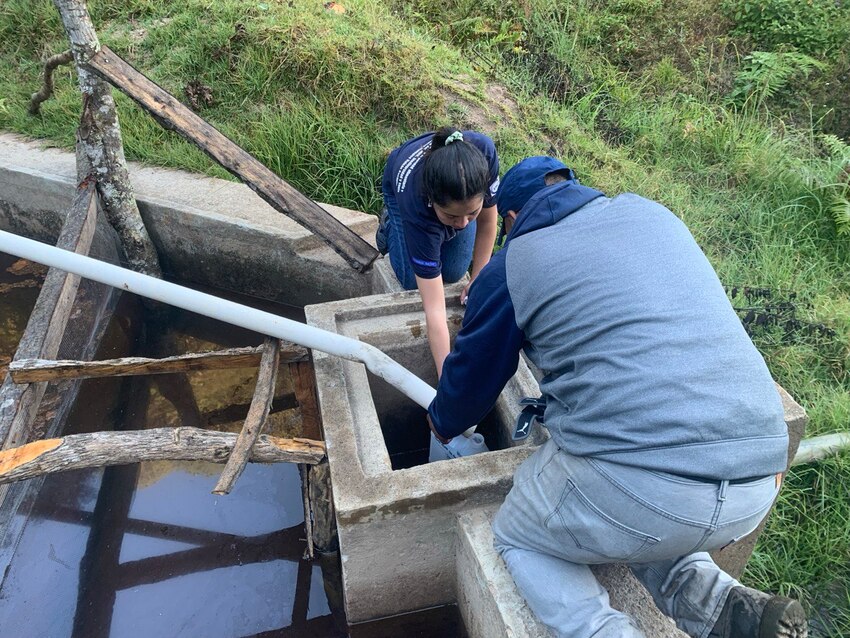
Community member and AESMO ranger collecting water samples for quality analysis. Credit: AESMO.
A chance to extend AESMO’s work
Support for our appeal will enable AESMO to expand their work and protect another 91 hectares (225 acres) of land. Among the land to be purchased is a 31-hectare (77-acre) private property in the Volcan Pacayita Biological Reserve. This piece of land alone contains four water springs within it.
Similarly, other plots to be purchased are located in and around the Pacayita and Guisayote reserves, and the Cerro Negro and Río Hondo micro-basins. All of these have been specifically chosen as they still have good forest cover, and all provide clean water to surrounding rural communities.

It’s crucial to protect the remaining cloud forest in this heavily fragmented landscape. Credit: Sobeida Morales
By protecting this land, you will help to improve the quality of life of thousands of local people who rely on the water from these forests.


